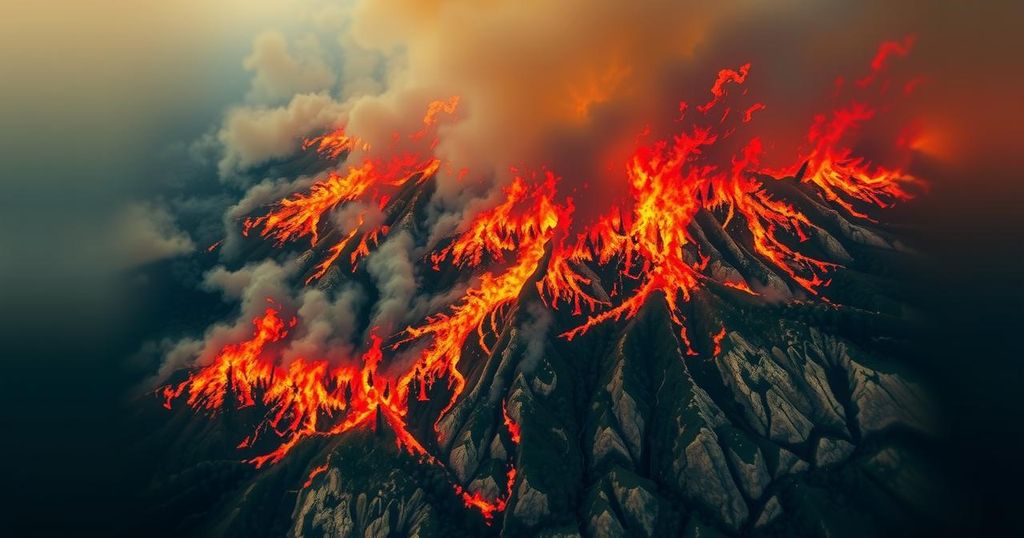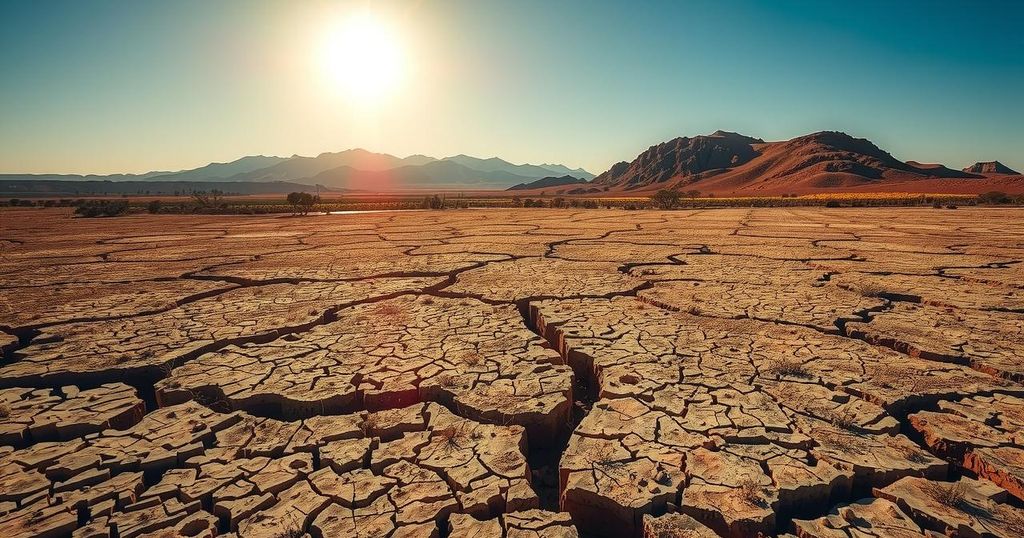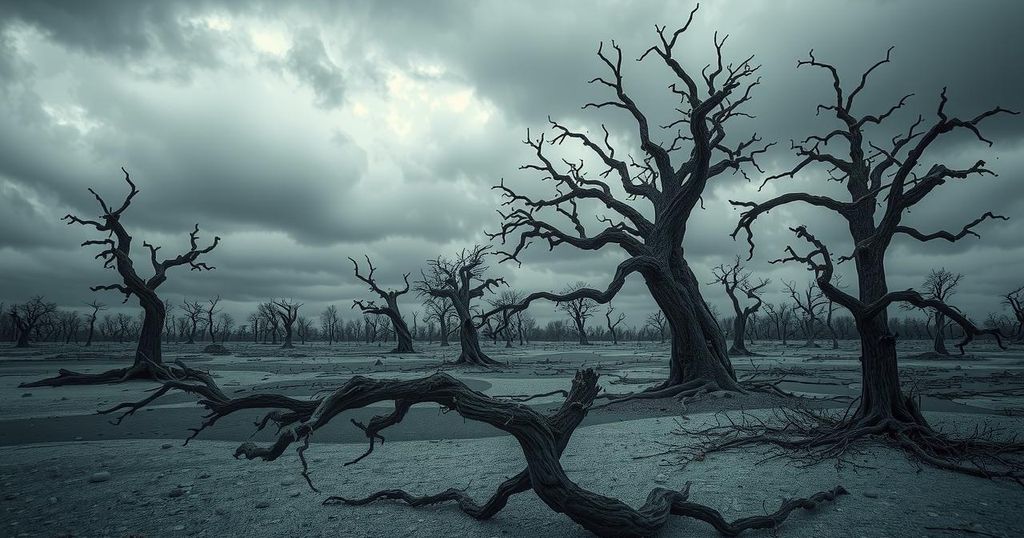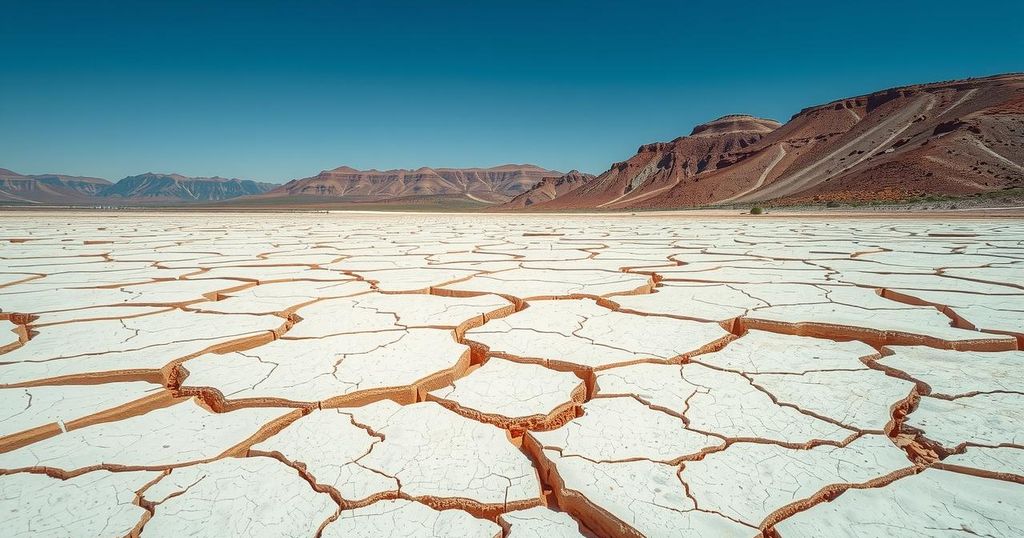Climate Change Drives Surge in Wildfires and Smoke-Related Deaths Globally
Research indicates a direct link between climate change and the increased frequency and intensity of wildfires globally, resulting in a corresponding rise in smoke-related deaths from approximately 669 annually in the 1960s to over 12,566 in the 2010s. While human activities have mitigated wildfire occurrences in some regions, overall trends reveal that climate change’s impact is growing, necessitating urgent action in reducing greenhouse gas emissions and improving fire management strategies.
Recent research has established a direct correlation between climate change and the increasing frequency as well as intensity of wildfires globally, linking these trends to a significant rise in smoke-related mortality over the past several decades. In two comprehensive studies, research teams from various institutions, including Dalhousie University in Canada, and collaborators from Belgium, the United Kingdom, and Japan, have investigated the prevalence of wildfires and their ramifications for public health, revealing deteriorated outcomes in both areas. Notably, the researchers estimate that the annual count of deaths related to wildfire smoke rose dramatically from fewer than 669 during the 1960s to over 12,566 by the 2010s. One of the studies, published in “Nature Climate Change”, analyzed models of wildfires with and without factoring in climate change. The findings indicated a pronounced increase in the occurrence and severity of wildfires across a variety of regions, particularly vulnerable ecosystems such as the African savannas, Australia, and Siberia. However, regional disparities were evident; while Africa, which accounts for approximately 70 percent of the global burnt area, observed a significant decline in wildfires attributed to increased human activity and land fragmentation, regions like California and Siberia saw a rise in fire incidents linked to extended drought conditions and elevated temperatures. Dr. Sian Kou-Giesbrecht, an associate professor at Dalhousie University and a co-author of the research, emphasized the significance of these findings in quantifying the impact of climate change on wildfires and their societal implications, stating, “The study is important because it shows and quantifies the influence of climate change on increasing wildfires worldwide, especially given the impacts of wildfire on society and its feedback to climate change.” The research utilized complex models incorporating factors such as climate, vegetation, and population density to assess the situation. Despite evidence that human interventions like fire suppression and landscape management can mitigate wildfire spread under certain conditions, these measures are often insufficient in combating the overwhelming influence of climate change during periods of extreme weather. Seppe Lampe, a climate scientist associated with Vrije Universiteit Brussel, remarked, “What is striking is that in periods with low to moderate numbers of fires, direct human interventions have a large effect. However, in periods with many fires, the effect of climate change dominates, meaning that in these cases we lose control.” The simulations suggested that climate change contributed to a nearly 16 percent increase in the global area burned from 2003 to 2019, and intensified the likelihood of facing months with above-average burned areas by 22 percent. Furthermore, the study indicated that climate change’s contribution to burned areas has escalated by 0.22 percent annually, with Central Australia experiencing the most pronounced increase. The findings also highlighted an alarming rise in mortality from wildfire smoke, with a separate paper revealing that climate change may have augmented the proportion of deaths attributable to wildfire smoke a tenfold increase over nearly five decades—a finding previously underestimated. Researchers utilized advanced fire-vegetation models alongside health risk assessments to ascertain the impact of climate change on fire-related fatalities between 1960 and 2019. The assessment found that while only 1-3 percent of wildfire deaths were linked to climate change in the 1960s, this figure surged to as much as 28 percent by the 2010s. Regions including South America, Australia, Europe, and the boreal forests of Asia reported the highest levels of mortality due to wildfire smoke. Dr. Kou-Giesbrecht pointed out the challenges in attributing wildfire trends directly to climate change due to the intricate dynamics at play among fire weather, global changes affecting potential fuel, land management practices, and ignition sources, affording that their research reflects a robust attribution effort. Looking forward, she warned that should the current trajectory of climate change persist, the area subjected to burning and the associated health risks will substantially increase in the coming decades.
The alarming trends in wildfire occurrences globally have raised significant concerns among environmental scientists and public health experts. Research has unveiled that climate change is not merely a contributing factor but a driving force behind the escalating frequencies and intensities of wildfires, threatening both ecosystems and human health. Studies conducted by teams from various reputable institutions have aimed to quantify these impacts, particularly focusing on health risks posed by smoke from wildfires, establishing a direct relationship that has become increasingly evident over the decades. The stark contrast in wildfire patterns across different regions underscores the complexities of land management and human influence in the battle against climate change-driven wildfires.
In summary, the studies elucidate a clear and concerning association between climate change and the rise in wildfires, alongside a notable increase in smoke-related mortalities. It has been determined that while human interventions can temporarily mitigate fire spread, the overarching effects of climate change remain formidable, particularly during extensive fire seasons. Therefore, it is imperative to adopt immediate and sustained measures to reduce greenhouse gas emissions, coupled with proactive landscape and fire management strategies, to mitigate the future impacts of wildfires on health, livelihoods, and ecosystems.
Original Source: www.dal.ca




Post Comment